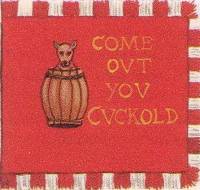Lord Fairfax’s Lifeguard of Horse

The final Parliamentarian harquebusiers for some time leave the painting table. Lord Ferdinando Fairfax's Lifeguard of Horse: raised in 1643 they were present at the capture of Leeds, and the Battle of Adwalton Moor. 1644 saw them besiege York, fight at Marston Moor, skirmish at Halton before skirmishing a Leeds. 1645 saw the regiment venture a little further afield after a skirmish at Skipton: they were sent to Cheshire to join Brereton's army - they didn't really do much apart from besieging High Ercall and joining the march into Wales (for which the regiment got paid £200). After service with Brereton they returned to Yorkshire after spending a couple of months in Derbyshire. Their final engagement was the Battle of Sherburn in Elmet. The Regiment carried an a cornet with interesting imagery -a Papal crown impaled upon a sword topped off by a royal crown. It carries a motto in Spanish which translates as "no hurt to the King, but to his evil Government" which s...


